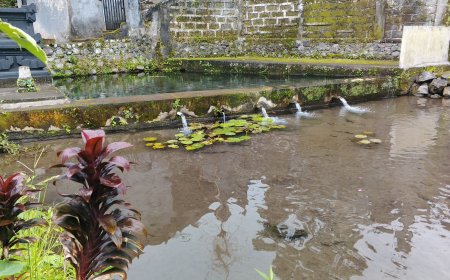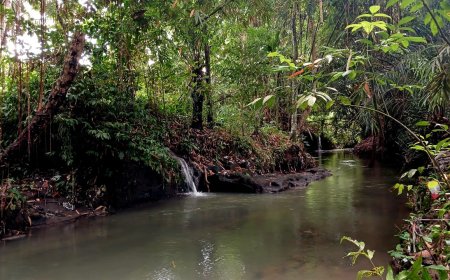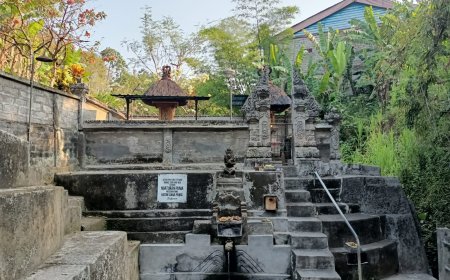Penglukatan Beji Dalem Sapat: The Three Sacred Springs of Nature and the Protection of Naga Raja
Penglukatan Beji Dalem Sapat, with its three sacred water spouts and the symbol of the Naga Raja, is a place rich in spiritual and cultural value. Through the cleansing rituals performed here, people not only seek spiritual purification but also aim to draw closer to God and maintain balance in their lives. The existence of this temple and its ritual baths is significant not only for the local community but also for visitors wishing to gain a deeper understanding of Balinese tradition and culture.
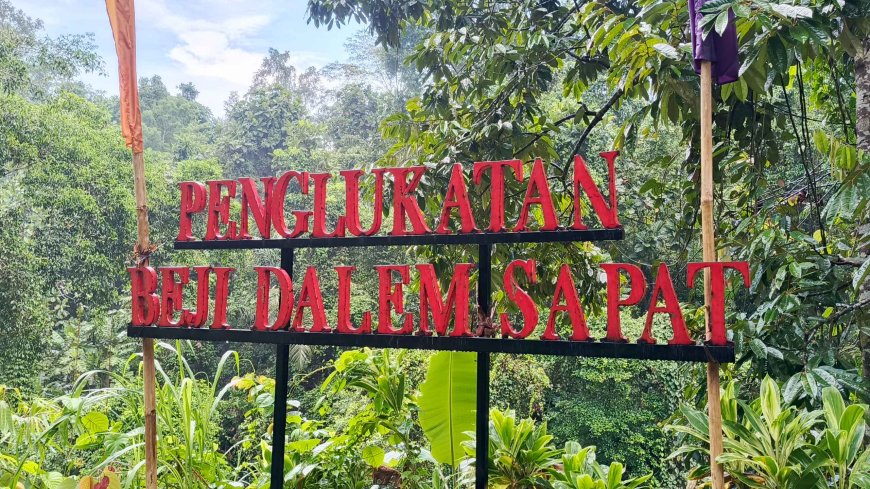
The purification site at Beji Dalem Sapat is situated by the riverside, surrounded by pristine tropical forest. To reach Pura Beji Dalem Sapat, visitors must descend dozens of steps from Pura Dalem and Pura Prajapati. This journey offers a refreshing experience, with the serene beauty of the surrounding nature enhancing the ambiance. There are three water spouts, all sourced from a natural spring. The surrounding natural beauty, along with the gentle sound of the river, adds a peaceful and calming atmosphere. The temple is also located at the confluence of two rivers, or Campuhan, flowing from the east and north, which naturally flow without human intervention.
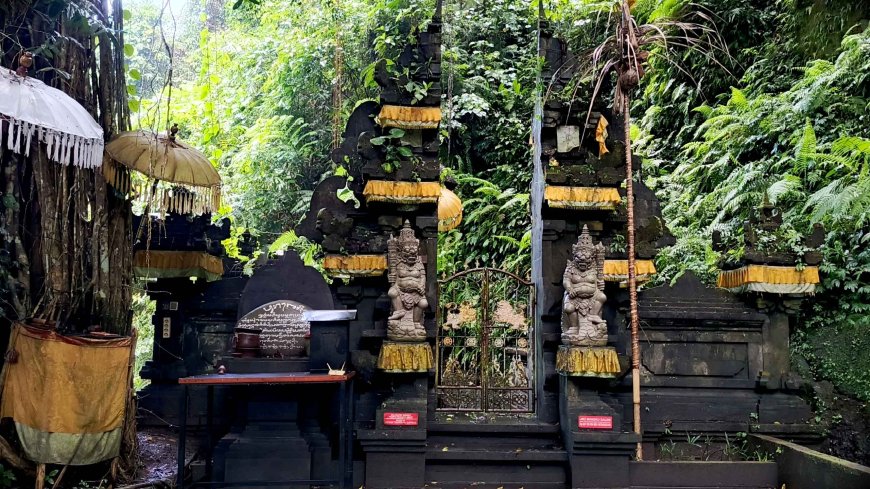
Pura Beji Dalem Sapat (Photo Source: Personal Collection)
Before performing the cleansing ritual, visitors first place canang or offerings as a form of worship at the outer courtyard of Pura Beji Dalam Sapat. The cleansing process is conducted in two stages: first at the confluence of the two rivers, then continued at the spouts in Beji Dalam Sapat. However, if the river's current is too strong, worshippers may proceed directly to the spouts at Beji Dalam Sapat.
In the temple area, there is also a statue of Dewi Sri, symbolizing fertility, prosperity, and blessings in Hindu belief. This statue represents the community's reverence for Dewi Sri as the goddess of agriculture, providing prosperity to farmers. The presence of this statue reminds worshippers of the importance of maintaining a harmonious relationship with nature and appreciating the resources provided.
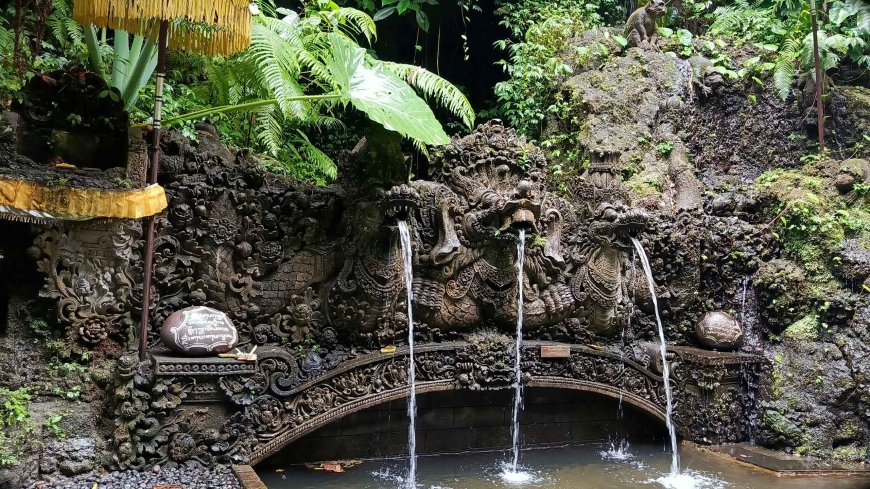
Penglukatan Beji Dalem Sapat (Photo Source: Personal Collection)
At Pura Beji Dalam Sapat, visitors will find three sacred water spouts, which are integral to the cleansing ritual. Each spout not only serves as a source of holy water but also carries profound spiritual significance, representing the purification process and prayers to God. These spouts are a symbol of hope for worshippers seeking protection, health, and guidance in their daily lives.
- First Spout: Used to cleanse oneself of negative energy and to seek protection. Worshippers perform rituals here to purify themselves before proceeding to the next spout.
- Second Spout: Here, worshippers pray for health and well-being. This ritual is meant to bring positive energy and to dispel all forms of illness or disturbance.
- Third Spout: The final spout is used to seek spiritual guidance and wisdom. Worshippers hope to receive inspiration and guidance in their daily lives.
The purification at Beji Dalam Sapat is also associated with the symbolism of Naga Raja. Holy water flows from the crevices of natural rocks, reaching Beji Dalam Sapat after passing through Pura Dalem and Pura Prajapati. This sacred water is channeled to Beji Dalam Sapat, forming three spouts guarded by three mythical serpents, or nagas. These nagas symbolize guardians of the purification and self-cleansing site. In Hindu mythology, these three nagas represent Sang Hyang Ananta Boga (Brahma), Sang Hyang Naga Basuki (Vishnu), and Sang Hyang Naga Raksaka (Iswara).
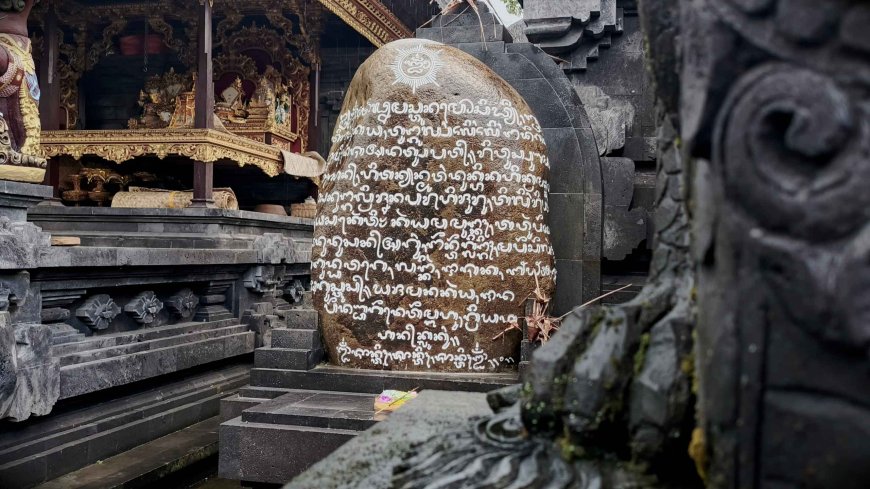
Inscription of Pura Dalem Sapat (Photo Source: Personal Collection)
The mythology of the three nagas describes the vital roles of Brahma, Vishnu, and Iswara in creating natural balance. In this tale, Brahma transforms into Naga Ananta Boga, entering the earth to enrich the soil, making it fertile. Vishnu transforms into Naga Basuki, whose head forms the ocean and whose tail becomes the mountains. Naga Basuki's head facilitates the movement of seawater, which evaporates to form clouds and eventually brings rain. Meanwhile, Iswara becomes Naga Tatsaka, a winged serpent that flies across the sky. By flapping its wings, Naga Tatsaka creates the breeze that refreshes life on earth. Mountains act as reservoirs for rainwater, which flows into lakes, springs, and rivers. When these waters reach such locations, humans and other creatures can utilize them for life. These three nagas are manifestations of the Tri Murti deities who restore balance to the universe and life on earth.
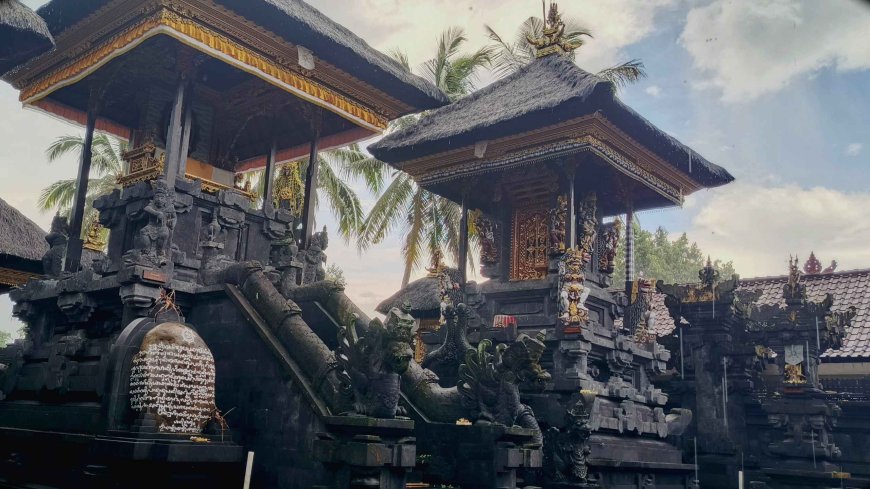
Pura Dalem and Pura Prajapati Sapat (Photo Source: Personal Collection)
Pura Dalem and Pura Prajapati in Sapat hold significant roles within the local community's spiritual and cultural context. Pura Dalem serves as a place of worship for deities associated with death and the spiritual realm, often used for ancestral worship and life cycle rituals, including ngaben (cremation) ceremonies. The presence of Pura Dalem reinforces the community's belief in honoring ancestors and maintaining connections with the spiritual world. Meanwhile, Pura Prajapati is dedicated to the worship of Dewa Prajapati, the god of creation and the universe, symbolizing fertility and life. Rituals at Pura Prajapati are associated with prayers for abundant harvests and protection from natural disasters. These two temples, together with Pura Beji Dalam Sapat, form a complementary spiritual complex, creating a space for the community to worship, perform rituals, and uphold their cultural traditions.
Pura Beji Dalam Sapat serves not only as a place of worship but also as a social center for the local community. The rituals conducted at this temple often involve active participation from the villagers, strengthening social ties and community bonds. Additionally, the temple has become a spiritual tourism destination for visitors seeking peace and the refreshing ambiance of the surrounding nature. Thus, Pura Beji Dalam Sapat is a site rich in spiritual, cultural, and social values, contributing significantly to the lives of the local community while also attracting those in search of profound spiritual experiences.

















































